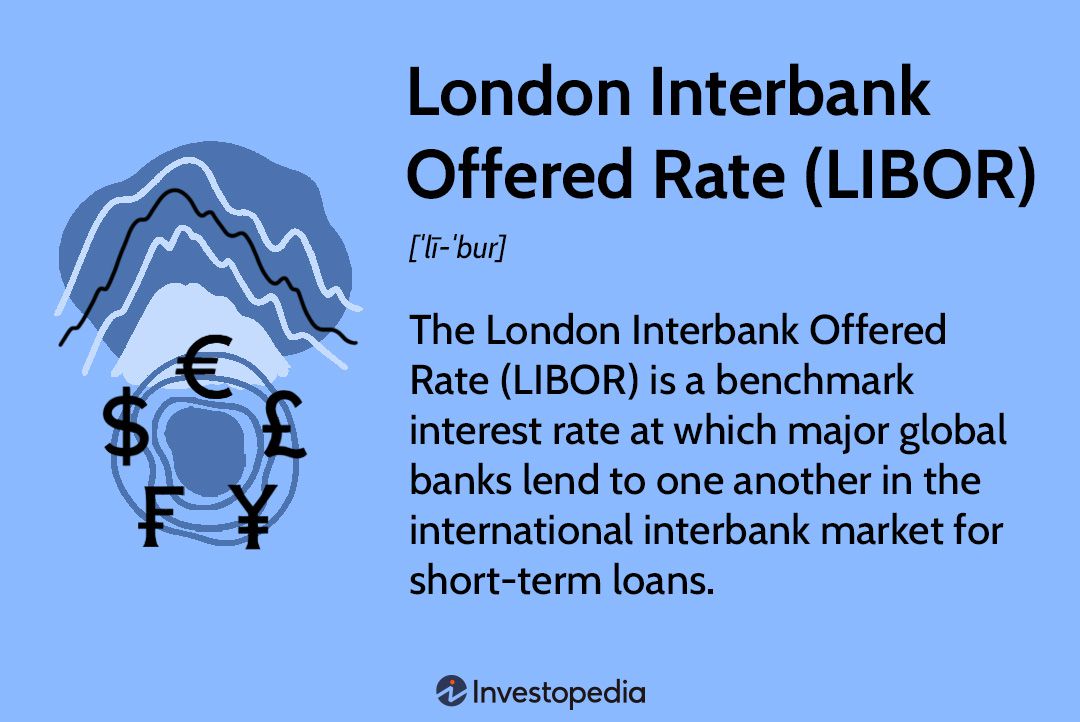London Interbank Bid Rate Libid What It Is How It Works

London Interbank Bid Rate (LIBID): What It Is, How It Works
What Was the London Interbank Bid Rate (LIBID)?
The London Interbank Bid Rate (LIBID) was the average interest rate at which major London banks bid for eurocurrency deposits from other banks in the interbank market. It was the rate that banks were willing to pay for eurocurrency deposits and other banks’ unsecured funds in the London interbank market, while LIBOR was the offered rate.
Eurocurrency deposits refer to bank deposits of a currency outside its issuing country. They may be of any currency in any country.
As a result of the LIBOR rate fixing scandals, LIBID was phased out along with LIBOR beginning in 2021.
Key Takeaways
– LIBID was the London Interbank Bid Rate, the rate at which banks were willing to borrow eurocurrency deposits.
– LIBOR was the rate at which banks were willing to lend to each other and was more popular.
– The most common currency deposited as eurocurrency was the U.S. dollar.
– Both LIBOR and LIBID were phased out beginning in 2021 due to rate-fixing scandals.
Understanding the London Interbank Bid Rate (LIBID)
The London Interbank Bid Rate (LIBID) was the other side of the London Interbank Offered Rate (LIBOR). Whereas LIBOR was the rate at which a bank is willing to lend eurocurrency deposits to another bank, LIBID was the rate at which banks are willing to borrow.
The difference between the two is the bid-ask spread on these transactions. When LIBID was high, it meant that borrowers were seeking to borrow funds with increasing demand.
While LIBOR was a popular benchmark interest rate calculated and published by Intercontinental Exchange (ICE), LIBID was not standardized or publicly available. It was not used outside the interbank lending market. The most common currency deposited as eurocurrency is the U.S. dollar. For example, if U.S. dollars are deposited in any bank outside the U.S.—for example, in Europe or the U.K.—then the deposit is referred to as a eurocurrency (eurodollars in this case).
The Difference Between LIBID and LIBOR
LIBID and LIBOR were reference rates set by banks in the London interbank market. The London interbank market is a wholesale money market where banks exchange currencies either directly or through electronic trading platforms.
Starting in the 1970s, LIBOR was the benchmark rate for interbank lending and is calculated for seven maturities for five currencies: the Swiss franc, the euro, the pound sterling, the U.S. dollar, and the Japanese yen. Before LIBOR fell out of use, there were 35 different LIBOR rates released to the market every day.
How the LIBID Rate Was Used
Until the rate-fixing scandal, both of these rates (especially LIBOR) were considered the foremost global reference rates for short-term interest rates of a variety of global financial instruments such as short-term interest futures contracts, forward rate agreements, interest rate swaps, and currency options.
LIBOR was also a key driver in the eurodollar market and is the basis for retail products like mortgages and student loans. They were derived from a filtered average of the world’s most creditworthy banks’ interbank bid/ask rates for institutional loans with maturities that range between overnight and one year.
The London Interbank Mean Rate (LIMEAN) is the calculated average between LIBOR and LIBID and could be used to identify the spread between the two rates. LIMEAN was also used by institutions borrowing and lending money in the interbank market (rather than using LIBOR or LIBID) and was a reliable reference to the mid-market rate of the interbank market.
Are LIBID and LIBOR Still Used?
Why Were LIBID and LIBOR Phased Out?
The London Interbank Offer Rate (LIBOR) and Bid Rate (LIBID) were reference rates used to measure the cost of lending and borrowing money between British banks. However, the validity of LIBOR was questioned in the 2012 rate-fixing scandal, when it was discovered that some bankers were colluding to manipulate the reference rate. The two rates were slowly phased out starting in 2021, and the final LIBOR was published in 2023.
What Is Replacing LIBOR and LIBID?
As a reference rate, LIBOR was replaced by the Secured Overnight Financing Rate (SOFR). However, a synthetic U.S. Dollar LIBOR is still being published to aid the transition.
The Bottom Line
LIBID was an interbank reference rate used to measure the cost of borrowing money between banks. Along with LIBOR, it was frequently used in variable-rate mortgages and contracts to measure the changing costs of borrowing money. LIBID and LIBOR were phased out in 2021 and replaced by the Secure Overnight Financing Rate (SOFR).


